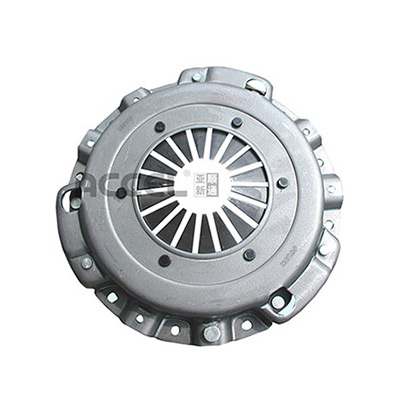- Arabic
- French
- Russian
- Spanish
- Portuguese
- Turkish
- Armenian
- English
- Albanian
- Amharic
- Azerbaijani
- Basque
- Belarusian
- Bengali
- Bosnian
- Bulgarian
- Catalan
- Cebuano
- Corsican
- Croatian
- Czech
- Danish
- Dutch
- Afrikaans
- Esperanto
- Estonian
- Finnish
- Frisian
- Galician
- Georgian
- German
- Greek
- Gujarati
- Haitian Creole
- hausa
- hawaiian
- Hebrew
- Hindi
- Miao
- Hungarian
- Icelandic
- igbo
- Indonesian
- irish
- Italian
- Japanese
- Javanese
- Kannada
- kazakh
- Khmer
- Rwandese
- Korean
- Kurdish
- Kyrgyz
- Lao
- Latin
- Latvian
- Lithuanian
- Luxembourgish
- Macedonian
- Malgashi
- Malay
- Malayalam
- Maltese
- Maori
- Marathi
- Mongolian
- Myanmar
- Nepali
- Norwegian
- Norwegian
- Occitan
- Pashto
- Persian
- Polish
- Punjabi
- Romanian
- Samoan
- Scottish Gaelic
- Serbian
- Sesotho
- Shona
- Sindhi
- Sinhala
- Slovak
- Slovenian
- Somali
- Sundanese
- Swahili
- Swedish
- Tagalog
- Tajik
- Tamil
- Tatar
- Telugu
- Thai
- Turkmen
- Ukrainian
- Urdu
- Uighur
- Uzbek
- Vietnamese
- Welsh
- Bantu
- Yiddish
- Yoruba
- Zulu
Aug . 17, 2024 06:48 Back to list
Trends and Innovations in the Timing Belt Market for Enhanced Performance and Longevity
The Timing Belt Industry A Key Component in Modern Machinery
The timing belt industry plays a vital role in the functionality of a multitude of machines and vehicles, serving as an essential component in various mechanical systems. Timing belts are widely used in automotive engines, industrial machinery, and consumer electronics to synchronize the rotation of shafts, ensuring that engine valves open and close at the proper times during each cylinder's intake and exhaust strokes. This precise synchronization is crucial for optimal performance, efficiency, and longevity of machinery.
Market Overview
As the global demand for automobiles continues to rise, the timing belt market has experienced significant growth in recent years. The automotive sector is the most substantial contributor to the timing belt industry's expansion, driven by increasing vehicle production and sales. According to industry reports, the global automotive timing belt market is projected to grow at a CAGR (Compound Annual Growth Rate) of approximately 4% over the next several years. This growth is largely attributed to the growing demand for fuel-efficient engines, which rely on advanced timing belt systems to optimize performance.
Material Innovations
The timing belt industry has also seen advancements in materials used for belt production. Traditionally, timing belts were crafted from rubber, but modern manufacturing often involves synthetic materials like polyurethane and aramid fibers. These materials offer enhanced durability, resistance to temperature fluctuations, and improved tensile strength. The integration of advanced materials not only increases the lifespan of the timing belts but also enhances their performance, reducing the risk of failure and maintenance costs for consumers.
Technological Advancements
Technological innovations play a crucial role in shaping the timing belt industry. Advances in manufacturing processes, such as precision molding and automation, have improved the overall quality and consistency of timing belts. Furthermore, the industry is witnessing a shift toward smart technologies, with the integration of sensors that monitor belt performance and wear. These sensors can provide real-time data to vehicle onboard systems, alerting drivers to potential issues before they escalate, thereby preventing costly breakdowns.
timing belt industry

Challenges and Competition
Despite its growth, the timing belt industry faces several challenges. The rising popularity of chain drives in high-performance engines poses a competitive threat to timing belts. Chains tend to offer longer lifespans and lower maintenance needs, making them an attractive choice for manufacturers looking to optimize engine reliability. Additionally, fluctuations in raw material costs and supply chain disruptions, especially in the wake of global events such as the COVID-19 pandemic, have posed challenges to timing belt manufacturers.
Future Prospects
Looking ahead, the timing belt industry is well-positioned to continue its growth trajectory, driven by the ongoing innovations and increasing demands across various sectors. The rise of electric vehicles (EVs) and hybrid technologies may also create new opportunities, as manufacturers need efficient timing solutions for these advanced drivetrains.
Sustainability is becoming increasingly important, and the industry could benefit from developing eco-friendly materials for timing belts and sustainable production practices. With these shifts, manufacturers who can adapt to changing environmental standards while maintaining quality and performance will likely lead the market.
Conclusion
In summary, the timing belt industry is an integral part of modern engineering and vehicle design. Its continued evolution through material advancements, technological integration, and adaptation to market challenges will ensure its relevance in future machinery and automotive applications. As the industry moves forward, staying attuned to consumer needs and environmental impacts will be key to securing its place in a rapidly changing world.
-
Korean Auto Parts Timing Belt 24312-37500 For Hyundai/Kia
NewsMar.07,2025
-
7PK2300 90916-T2024 RIBBED BELT POLY V BELT PK BELT
NewsMar.07,2025
-
Chinese Auto Belt Factory 310-2M-22 For BMW/Mercedes-Benz
NewsMar.07,2025
-
Chinese Auto Belt Factory 310-2M-22 For BMW/Mercedes-Benz
NewsMar.07,2025
-
90916-02660 PK Belt 6PK1680 For Toyota
NewsMar.07,2025
-
drive belt serpentine belt
NewsMar.07,2025

